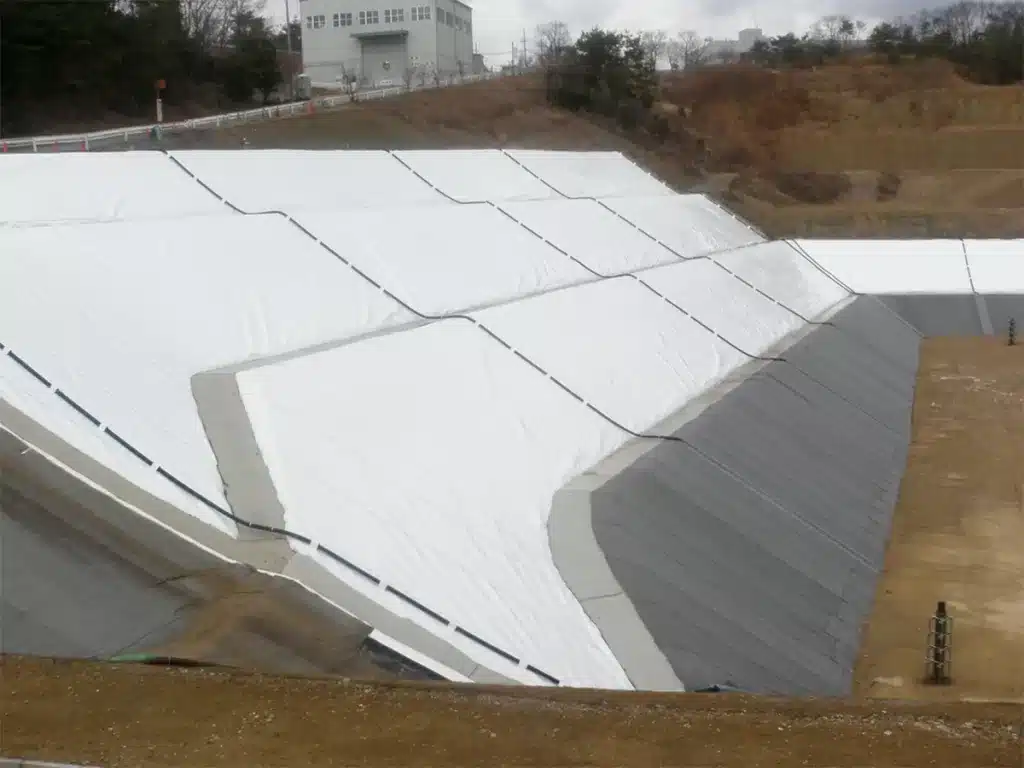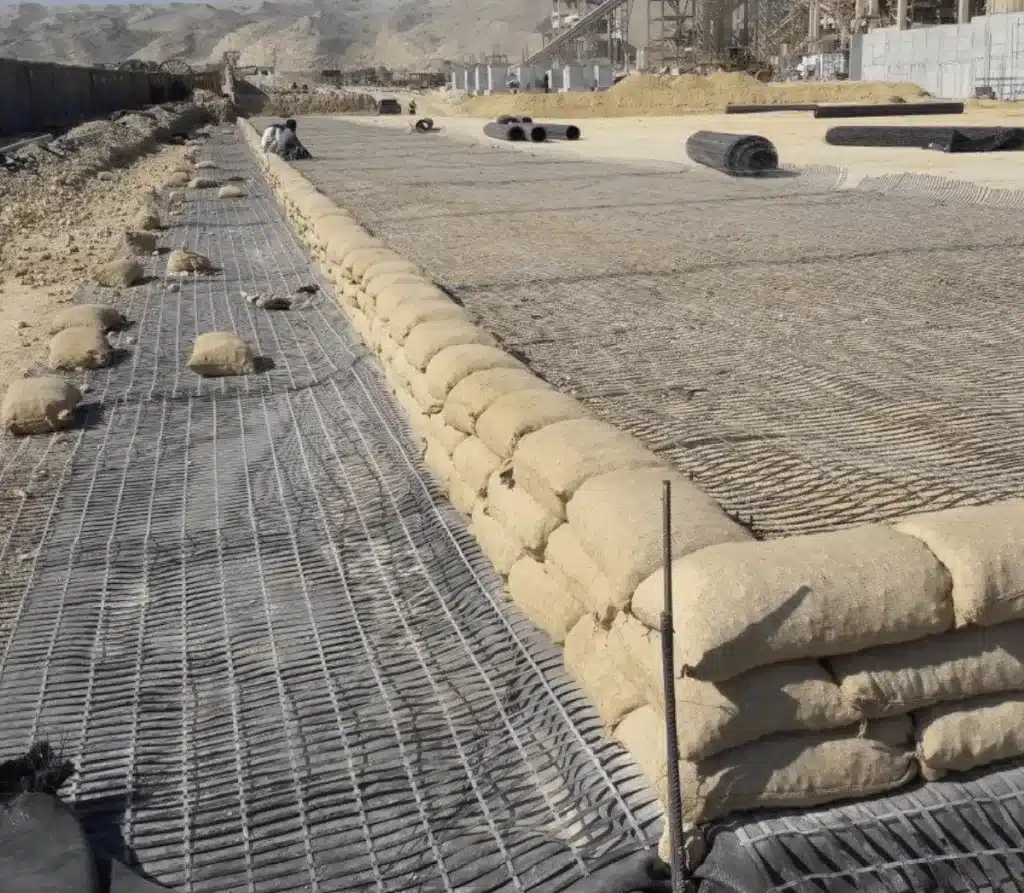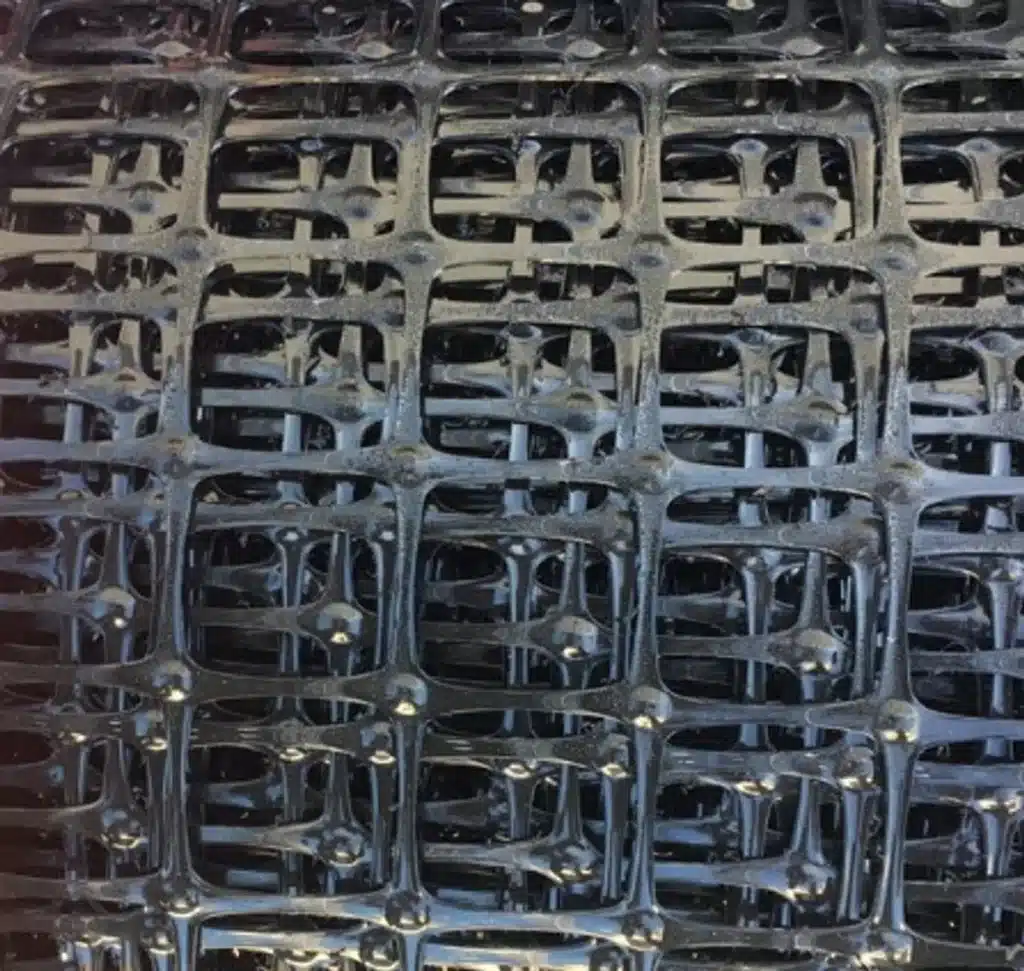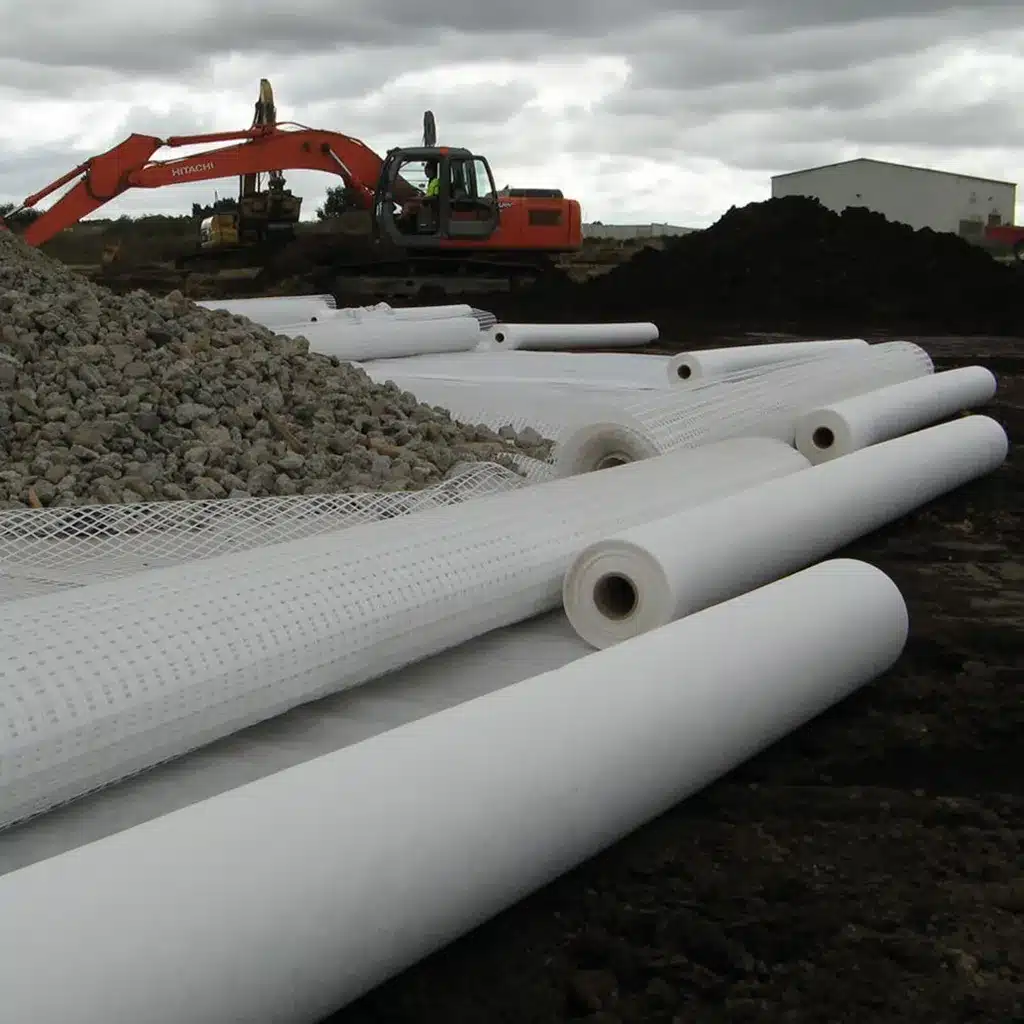+86-159 9860 6917
info@geofantex.com
geofantex@gmail.com
+86-400-8266163-44899
Geosynthetic waste filtration is a crucial aspect of modern environmental engineering. This article explores what geosynthetic filtration is, its applications, the filtration process in geotextiles, and how geosynthetics play a vital role in waste disposal.

What is Geosynthetic Filtration?
Geosynthetic filtration is a technique that separates solid and liquid components in waste or soil. It uses geosynthetic materials, like geotextiles and geomembranes, engineered to allow water to enter a drainage media (such as gravel or a geosynthetic) while preventing soil particles from doing so. This method stops harmful substances from spreading, ensuring environmental protection.
What are the Applications of Geosynthetics in Filtration?
Geosynthetics find diverse uses in filtration processes, including:
- Landfills: Geomembranes prevent leachate from contaminating the surrounding soil and groundwater.
- Stormwater Management: Geotextiles help remove pollutants and sediments from stormwater runoff.
- Mining: Geosynthetics are used in tailings management to control seepage and maintain stability.
- Erosion Control: Geosynthetics stabilize slopes and shorelines, preventing soil erosion.
- Wastewater Treatment: Geosynthetic materials assist in dewatering and solids separation in sewage treatment, providing effective solutions. Additionally, they can replace aggregate-filled ‘French drains’ alongside roadways or as slope interceptor drains, enhancing drainage systems.

What is the Filtration Process in Geotextile?
Geotextiles are frequently employed in geosynthetic filtration because of their outstanding filtering abilities. The filtration process in geotextiles includes the following steps:
- Water or liquid containing suspended particles is directed toward the geotextile.
- The geotextile serves as a filter, permitting water to filter through while blocking larger stone or soil particles.
- The filtered water then flows through the geotextile and is gathered for subsequent processing or safe discharge.
- Any solid particles retained collect on the surface of the geotextile and can be periodically removed or disposed of properly.
What are Geosynthetics for Waste Disposal?
Geosynthetics have a crucial role in waste disposal, ensuring environmental protection and containment. They are used in various waste management applications, such as:
- Landfill Liners: Geomembranes and Geosynthetics Clay Liner (GCLs) prevent waste materials from contaminating soil and groundwater. GCLs can be used to prevent groundwater from entering the landfill and prevent land subsidence caused by leakage.
- Leachate Collection Systems: Geosynthetic materials aid in collecting and safely managing leachate generated within landfills.
- Waste Capping: Geomembranes and geotextiles cap landfills, creating a barrier to prevent further waste infiltration and reduce gas emissions.
- Erosion Control: Geosynthetics stabilize slopes and prevent erosion in waste disposal facilities, safeguarding the environment.
In conclusion, geosynthetic waste filtration is an indispensable part of modern environmental engineering, safeguarding our ecosystems and ensuring sustainable waste management. By understanding its applications and processes, we can better protect our environment and future generations.



Get Free Sample
We’ll respond as soon as possible(within 12 hours)






















